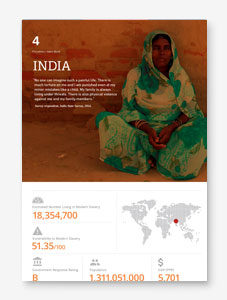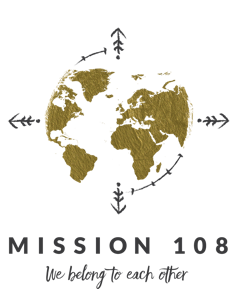With a population 1 billion, India is a country of striking contrasts and enormous ethnic, linguistic, and cultural diversity. There are more than 1,600 languages, nearly 400 of which are spoken by more than 200,000 people. Many of the 25 states that make up India’s federation are larger than most countries. Thirteen states have more than 20 million people, six have populations of 60 million, three exceed 80 million.
About ‘Nai asha’ Operational Area “Uttar Pradesh
Uttar Pradesh with over 200 million inhabitants in 2011 is the most populous state in the country as well as the most populous country subdivision in the world.
Hindi is the official and most widely spoken language in its 75 districts of UP. These states different in terms of their natural resources, administrative capacity, and economic performance.
Human Trafficking in Indian context- “Half of the world’s slave live in India”.
The concept of human trafficking refers to the criminal practice of exploiting human beings by treating them like commodities for the profit. Even after being trafficked, victims are subjected to long-term exploitation. The UN Protocol to Prevent, Suppress and Punish Trafficking in Persons, especially, Women and Children 2000 gives first internationally recognized definition of trafficking. According to this definition trafficking involves –Movement of persons – recruitment, transportation, transfer, harboring or receipt of a person,
Trafficking must have an element of force, threat or coercion, or an element of deceit or fraud (which vitiates any voluntary movement by the victim). This also includes abuse of power by a person who has the position of authority or control over the victim. The vulnerable position of the victim, whether a child or a woman, is clearly brought out in such situations. A guardian may force a child into marriage or may perform a fraudulent marriage of his ward. He may dedicate a girl child to a deity for prostitution.
The third element in the definition is the element of exploitation which can be sexual exploitation, forced labor or forced services, slavery or practices similar to slavery which may cover activities such as bonded labor, debt bondage, begging or use of children as camel jockeys. Sexual exploitation would also include pornography and pedophilia. One of the activities specifically referred to in the definition is removal of organs.

View Global Slavery Index 2016
Challenges
- Economics injustice and poverty- If you are born in a poor family in North Western state of India then you are at higher risk of being sold .If you are born in poor family and a girl then these chances further increases. Sometimes parents are also desperate to sell their daughters to earn money.
- High rate of Demand– Fundamental theory of Demand and supply is applicable to this situation as well. Men for work generally migrate to major commercial cities and from here the demand for commercial sex is created .To fulfill the supply all sorts of efforts are made by the suppliers like abduction etc young girls and women belonging to poor families are at higher risk.
- Gender Biased Community system tends to forced marriage – Girls and women are not only trafficked for prostitution but also bought and sold like commodity in many regions of India where female ratio is less as compared to male due to female infanticides. These are than forced to marry.
Strategy to combat the issue- Human Trafficking
- Prevention – Through “Speak – Up” Campaign.
- Action
- “Bahram” Rescue Operation
- “Nai Asha” Safe Home for survivors.
Some of the success stories
She has opted Beautician Training for a year as life skill, including high profile 2 day workshops on Ethnic Beauty Culture organised in Pragti Maidan, Delhi. She has completed a CCC computer course from Study Centre of Manipal Sikkim University, Lucknow. Last month she has qualified exam for Govt Job, waiting for her appointment letter.
 Priyanka
PriyankaMariya was illiterate when she came in “Nai Asha” Safe Home. Within 3 months she started writing small words even she was able to form small sentences in English. In her two years stay she has learned computer, Beauty Culture, Macramé, Tie-Dye, Batik, Screen Printing, & fashion Tailoring. She will write her exams for 10th grade in February 2016 (NIOS Board). She is employed now in a boutique and drawing a handsome salary.
 Mariya
Mariya

